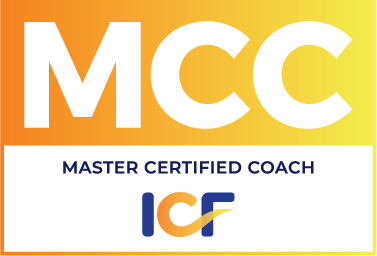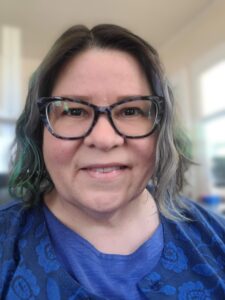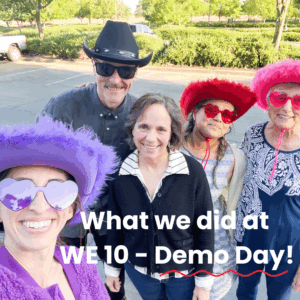As some of you know, I am in the middle of facilitating a book study group for attorneys. We are studying my book – Coaching for Attorneys: Improving Productivity and Achieving Balance. We are currently covering the chapter on accountability. If you are unfamiliar with this material, we define “accountability” somewhat different from the way it is typically used. We define it as “the ability to account for your results and your choices.” The purpose of accounting for our results and choices is to learn from results we don’t want and to generate future results that are more in line with what we do want. Here’s what I recently learned about accountability in my own life.
Last weekend, I went to a debate tournament with my 7th grade son. The teacher had asked for parents to be trained as judges and I had volunteered. I went to the training and found that debate is complicated! Nonetheless, I had agreed and so I went to the tournament.
Then I find myself Saturday morning, it’s raining and we are leaving the house at 7 am. I pick up the other debaters and I am driving to the middle school where the debate will be held. I notice I am feeling annoyed by this whole thing. “Why did I agree to go to this Saturday event? I want to be sitting at home with my cup of coffee and reading. I want to go to my Saturday morning exercise class. I have another event tonight. I am going to be so tired.” And on and on in my head.
Then I thought, “Am I really choosing to spend my day doing something I don’t want to do? What a waste of time that is. Hey, I am teaching other people about accountability. Why don’t I use the accountability process now and see what I can do differently.”
In the book, we use a specific “Accountability Process” to learn about making more conscious choices, to learn what choices we made to get a particular result and to learn what new choices we might have available to us that we may not have seen before.
The Accountability Process:
1. Notice the Result. State it neutrally and without judgment or story. My results: (1) I am driving in the rain, with my son and his debate team 7 am on a Saturday morning; (2) I agreed to attend the debate and to judge if needed; and — the result I really don’t want — (3) I am feeling annoyed that I “have to” do this.
2. Own the result. What choices did I make that got me this result? The result I really want to look at is my bad mood. The result I don’t like is feeling so resistant to being here. What choices did I make that I have this result; i.e., that I am in a bad mood about this? (1) I chose to commit to this; (2) I am currently choosing to think about all the other things I could be doing; and (3) I might even say I am “choosing” this current mood. (Note: It is very valuable to acknowledge that we often choose our feelings and moods, since the alternative is to feel a victim to our feelings and moods as I was on this day.)
3. Look for patterns. Is the behavior that I exhibited in making the choices a pattern or habit for me? The behavior is my choosing to commit to an activity and then wishing I didn’t have to do it and being in a bad mood about it. Is this a pattern? I.e., can I see this behavior elsewhere in my work and my life? What I notice is pretty enlightening to me. When I look back over the years, especially in my personal life, I can see I often do agree to things and then later when I get close to the actual event, I wish that I hadn’t agreed to it and that I could get out of it. What an interesting discovery this is – I had no idea I did this so often!
4. Learn from my choices. (This part can reveal real information about what I call “non-working” behaviors. When you discover that you make certain choices routinely and as part of a pattern, then making different choices enables you to not follow that same pattern in the future. Making changes to a pattern of behavior which consistently causes you to end up with results you don’t want can create positive changes in many different areas of your life.) Useful in discovering what I can learn about myself is to ask what are the beliefs, attitudes and assumptions that drove the behavior?
What can I learn about myself? To get at my beliefs, attitudes and assumptions, I asked myself this question: “what do I stan d to gain from choosing to be in a bad mood about this?” (I.e., what is the belief behind it?) And I realized a whole host of things. Among them that I was nervous about judging because I did not understand how to do it. But why would I be in a bad mood about it? I believed that if I was in a bad mood about it, maybe I could get out of doing it. That was a lightbulb for me. My underlying belief was that if I happily and enthusiastically approach a task that I am nervous about doing, then I am committing myself to it. Somehow I believed I might not “have to” do it, if I was unhappy about it. Because I believed I had to stay committed to judging and could not pull out, then on a less conscious level I “decided” I would be unhappy about it and maybe that would get me out of it.
d to gain from choosing to be in a bad mood about this?” (I.e., what is the belief behind it?) And I realized a whole host of things. Among them that I was nervous about judging because I did not understand how to do it. But why would I be in a bad mood about it? I believed that if I was in a bad mood about it, maybe I could get out of doing it. That was a lightbulb for me. My underlying belief was that if I happily and enthusiastically approach a task that I am nervous about doing, then I am committing myself to it. Somehow I believed I might not “have to” do it, if I was unhappy about it. Because I believed I had to stay committed to judging and could not pull out, then on a less conscious level I “decided” I would be unhappy about it and maybe that would get me out of it.
5. Act on the learning. Implement a change based on what you learned. Once I learned that my bad mood arose from my fear of doing something I didn’t understand how to do and that I was in some covert way trying to get out of it – without obviously, just walking away – then I could make a conscious choice. I saw the choice really as “stay here and choose to have a good time; or choose to withdraw from judging and leave.” I decided to stay. Then I asked myself this: “If I could choose to be in any state I wanted, what state would I choose?” I decided that for this day I would choose to be curious and have fun.
Postscript: Doing this process was a very valuable experience for me. First, it turns out I wasn’t needed as a judge. Second, at lunchtime I took a walk and I checked in on my intention to be curious and have fun. I realized I was having a great deal of fu n watching these young children learning to debate complicated assertions. I realized too that consciously deciding to be curious really worked to help me enjoy the experience and learn a lot. After this day, I have noticed this pattern emerge repeatedly – that I resist things I’ve agreed to do but don’t fully understand or feel comfortable with. And repeatedly, I have looked at it, made a conscious choice to either do it or not do it. If I chose TO do it, ask myself what is the state of being/feeling I’d like to have in this experience? This has had significant effect on a number of areas of my life.
n watching these young children learning to debate complicated assertions. I realized too that consciously deciding to be curious really worked to help me enjoy the experience and learn a lot. After this day, I have noticed this pattern emerge repeatedly – that I resist things I’ve agreed to do but don’t fully understand or feel comfortable with. And repeatedly, I have looked at it, made a conscious choice to either do it or not do it. If I chose TO do it, ask myself what is the state of being/feeling I’d like to have in this experience? This has had significant effect on a number of areas of my life.






